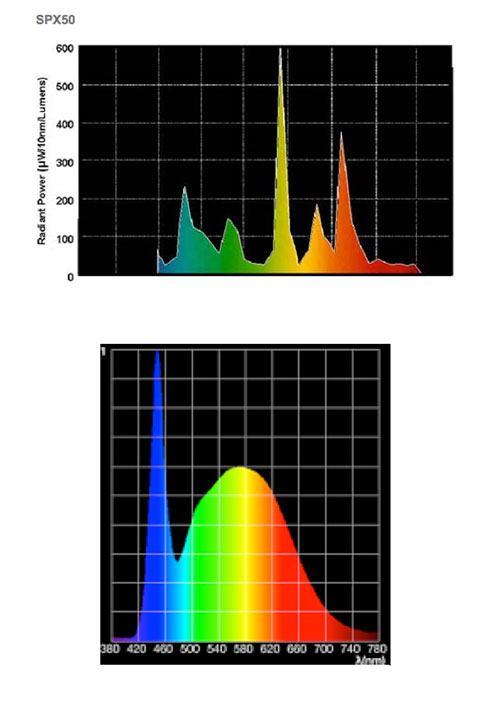By Stan Walerczyk
Color rendition Index (CRI) and R9, which is red content, are two important factors to select LED and/or incumbent interior products. This can be critical for distributors and contractors optimally filling customers’ needs.
CRI should be at least 80 out of a perfect 100, which daylight and incandescent are considered to have.
CRI should really only be considered with the same Kelvin. For example, a 80 CRI 3000K light source has the same average CRI as a 80 CRI 5000K light source, but the 3000K light source will do a much better job highlighting warm color tones, such as reds, browns and oranges, and the 5000K light source will highlight cool colors, such as whites, blues and greens much better.
Also light sources with the same CRI and Kelvin may not show colors the same. We see with both our eyes and brain. Tri-phosphor fluorescent lamps, which have 80 CRI have three large spikes and deep valleys between them. The brain does a pretty good job filling in the valleys, but it is not perfect. LEDs do not have the deep valleys, so the brain does not need to do as much.
Check out these 5000K fluorescent and LED spectral distributions.
Recently I have looked at objects lit by 5000K and 80 CRI fluorescent and LED, and the objects looked better with the LED light.
There are two major benefits of high Kelvin, no matter the lighting technology. These benefits are visual acuity and alertness. With high Kelvin, such as 5000, visual acuity can either be improved with the same wattage or maintained while reducing wattage. The IES now approves the benefits of high Kelvin lighting, since approving TM-24-13 last year. High Kelvin lighting, especially with significant 460 – 490 nanometer (nm) can improve circadian rhythms, short and long term alertness and other factors. But that will be a future column.
R9 should be at least zero and 10+ is usually recommended. With negative R9, skin tones and other reddish and red objects do not look good.
Quartz MH typically has 70 or lower CRI and -100 R9. Production on 700 series T8 lamps, which have CRI in the 70s, was stopped July 1 of this year.
Most LEDs, which have CRI in the 70s have negative R9. Usually, LEDs with at least 80 CRI, which have at least a zero R9, are recommended for interior applications. But some LEDs with at least CRI, may still have negative R9. You can ask LED product and fixture manufacturers their R9 values. If they want to let you know, it is probably negative.
CRI is based on eight pastel colors and none of them red. So a bright red cell was added, and this is called R9. As seen below, there are also some additional color cells.

Here are some examples of how important CRI, R9 and R10 – 14 can be. R9 can be very important for lighting red meat in store freezers. R12, which is bright blue, can be very important in various manufacturing processing, such as installers soldering various tones of blue and other wires. R4, R11 and R14 could be important in lettuce and other green food processing plants.
Why even consider a 70 CRI and negative R9 LED hibay and other types of fixtures, when there are good fluorescent, ceramic MH and LED ones with 80+ CRI and positive R9?
Please let me know what you think of any of my statements. Also if you have a lighting subject that you would like information about, let me know at stan@lightingwizards.com.
Tagged with circadian rhythms, Exclusive Feature, lighting, tED